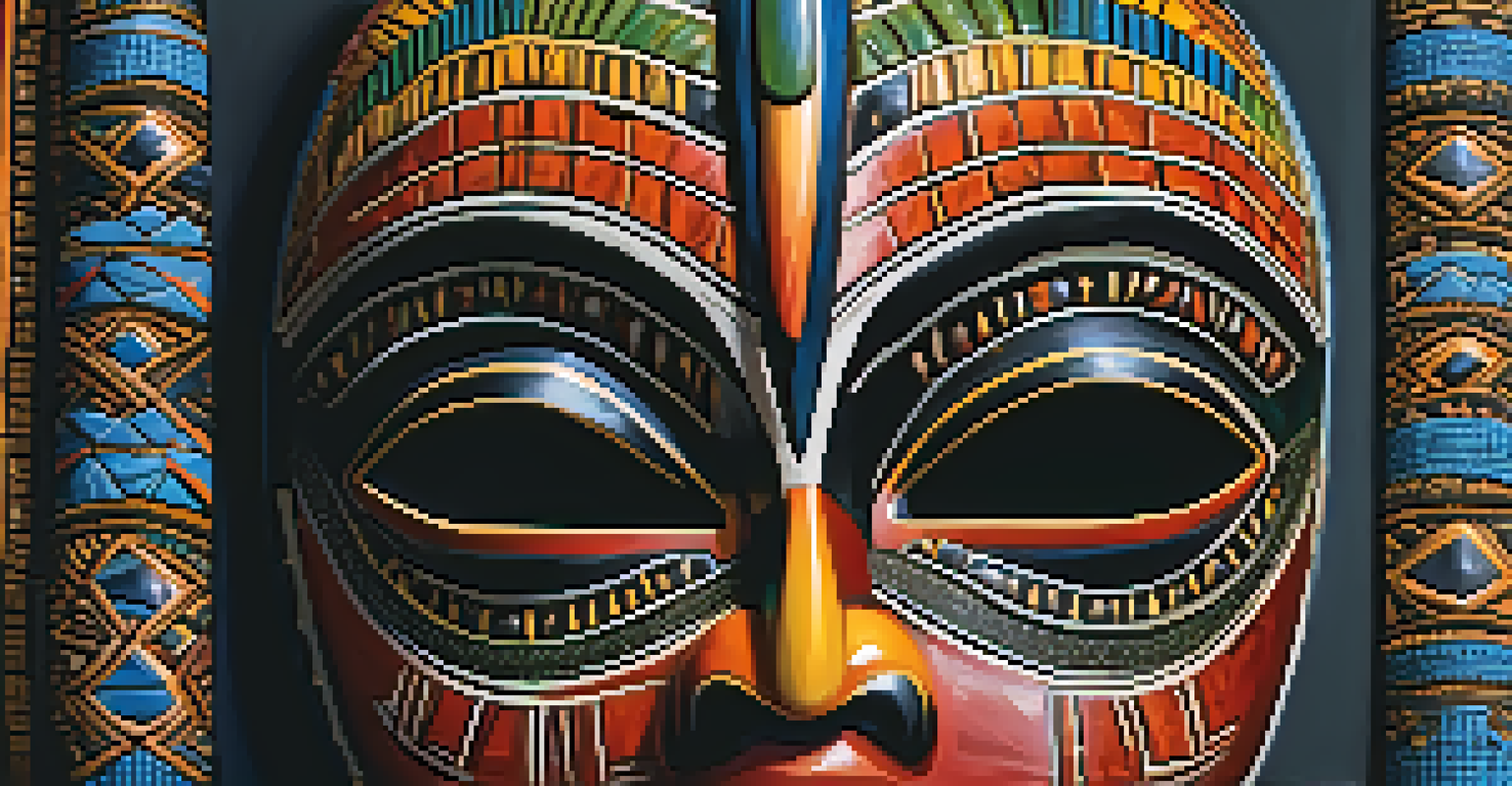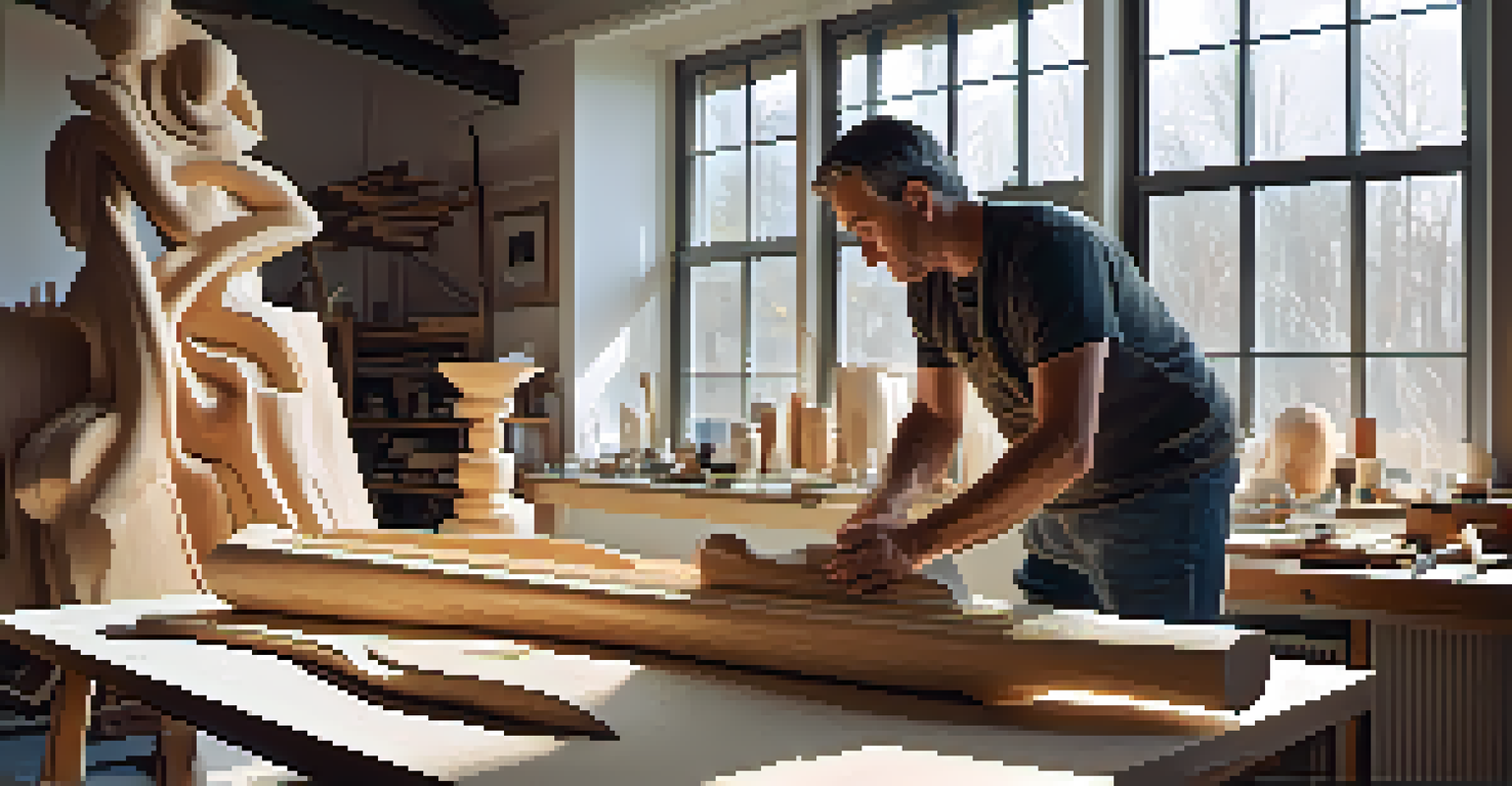Carving and Identity: How Cultures Use Art to Define Themselves

Understanding Carving as a Cultural Expression
Carving has been a significant form of artistic expression across various cultures for centuries. It serves not only as a creative outlet but also as a means to communicate core values and beliefs. Through intricate designs and symbolism, carvings tell stories of history, spirituality, and identity.
Art is a reflection of our culture, a mirror that reveals our values, beliefs, and stories.
These artistic expressions can be found in everything from totem poles of Indigenous peoples to the delicate wood carvings in Asian cultures. Each piece is steeped in meaning, often reflecting the community's struggles, triumphs, and aspirations. Carving thus acts as a visual language, bridging generations and connecting individuals to their heritage.
By understanding carving as a cultural expression, we can appreciate its role in shaping identities. It’s not just about the act of carving itself but the stories and traditions that are passed down through the art form.
The Role of Symbolism in Carved Art
In many cultures, symbolism plays a crucial role in the art of carving. Each symbol is carefully chosen, often representing significant aspects of life, nature, or spirituality. For example, in African cultures, animals carved into masks may signify strength or wisdom, connecting the wearer to the spirit world.

These symbols create a deeper connection to the work, allowing viewers to engage with the culture on a more profound level. A single carving can evoke a myriad of emotions and interpretations based on the viewer's own experiences and cultural background. This shared understanding fosters a sense of community and belonging.
Carving as Cultural Identity
Carving serves as a powerful medium for expressing and preserving the values, beliefs, and history of various cultures.
As we explore the symbolic nature of carved art, we see how it not only defines the artist's identity but also resonates with the identities of those who encounter it. This interaction between art and observer enriches the cultural narrative.
Carving Traditions and Their Cultural Significance
Each culture has its own unique carving traditions that have evolved over time. These traditions are often passed down through generations, preserving techniques and styles that are intrinsic to a culture's identity. For instance, the Maori of New Zealand are known for their intricate wood carvings called 'whakairo,' which tell their ancestral stories.
Carving is not just about the act; it's about the stories that shape our identities and connect us to our heritage.
These traditions are not merely about aesthetics; they embody the values, beliefs, and histories of the people. They serve as a reminder of where a culture has come from and offer insight into its future. By maintaining these traditions, cultures assert their identities in an ever-globalizing world.
Understanding the significance of these carving traditions allows us to appreciate the depth of cultural identity. They serve as a testament to resilience, creativity, and the importance of heritage in shaping who we are.
Carving as a Means of Resistance and Resilience
Throughout history, carving has also been a means of resistance against oppression and cultural erasure. For many indigenous populations, carving serves as a powerful reminder of their identity and history in the face of colonization and globalization. By continuing to carve traditional designs, these cultures assert their existence and relevance.
This form of artistic expression becomes a tool for resilience, allowing communities to reclaim their narratives and challenge dominant ideologies. For instance, the carving of traditional masks in various cultures often includes elements that directly confront stereotypes and misrepresentations.
Symbolism in Carved Art
Symbols in carved art create deeper connections, allowing viewers to engage with cultural narratives and shared identities.
Through carving, artists not only preserve their heritage but also inspire future generations to embrace and celebrate their identities. This dynamic relationship between art and activism highlights the transformative power of carving in cultural identity.
Modern Interpretations of Traditional Carving
As societies evolve, so do their artistic expressions. Modern artists often blend traditional carving techniques with contemporary themes, creating a dialogue between past and present. This fusion allows for a re-examination of cultural identity and its relevance in today's world.
For example, some artists incorporate modern materials or themes into their carvings, challenging traditional boundaries and expanding the scope of what carving can represent. This evolution encourages younger generations to engage with their heritage while also adapting it to contemporary contexts.
By embracing modern interpretations, cultures can keep their identities alive and vibrant. This adaptability ensures that carving remains a relevant and impactful form of expression, bridging the gap between generations.
The Global Exchange of Carving Techniques
In our interconnected world, the exchange of carving techniques across cultures has become increasingly common. Artists from different backgrounds often collaborate, sharing their methods and styles to create something entirely new. This global exchange enriches the art of carving, fostering creativity and innovation.
Such interactions can lead to exciting new forms of expression while still honoring traditional roots. For instance, a carver from Africa might incorporate techniques learned from an Asian artist, resulting in a unique blend that respects both cultures. This interplay demonstrates how carving can transcend boundaries and create a shared sense of identity.
Modern Takes on Traditional Carving
Contemporary artists blend traditional carving techniques with modern themes, ensuring that cultural identities remain vibrant and relevant.
However, it's essential to approach this exchange with respect and understanding of the cultural significance behind each technique. By doing so, we ensure that the art of carving continues to thrive while honoring its diverse origins.
Carving: A Living Legacy of Cultural Identity
Ultimately, carving stands as a living legacy of cultural identity. It encapsulates the stories, values, and aspirations of a community, making it an invaluable aspect of cultural heritage. As we engage with carved art, we participate in a larger narrative that connects us to the past and informs our understanding of the present.
Whether it's through traditional practices or modern adaptations, the art of carving reminds us of the importance of preserving our identities amid a rapidly changing world. It encourages us to reflect on our own stories and how they intertwine with the broader tapestry of human experience.

By celebrating carving as a vital expression of culture, we acknowledge its role in shaping our identities and fostering connections across diverse backgrounds. In this way, carving becomes more than just art; it becomes a powerful testament to who we are.